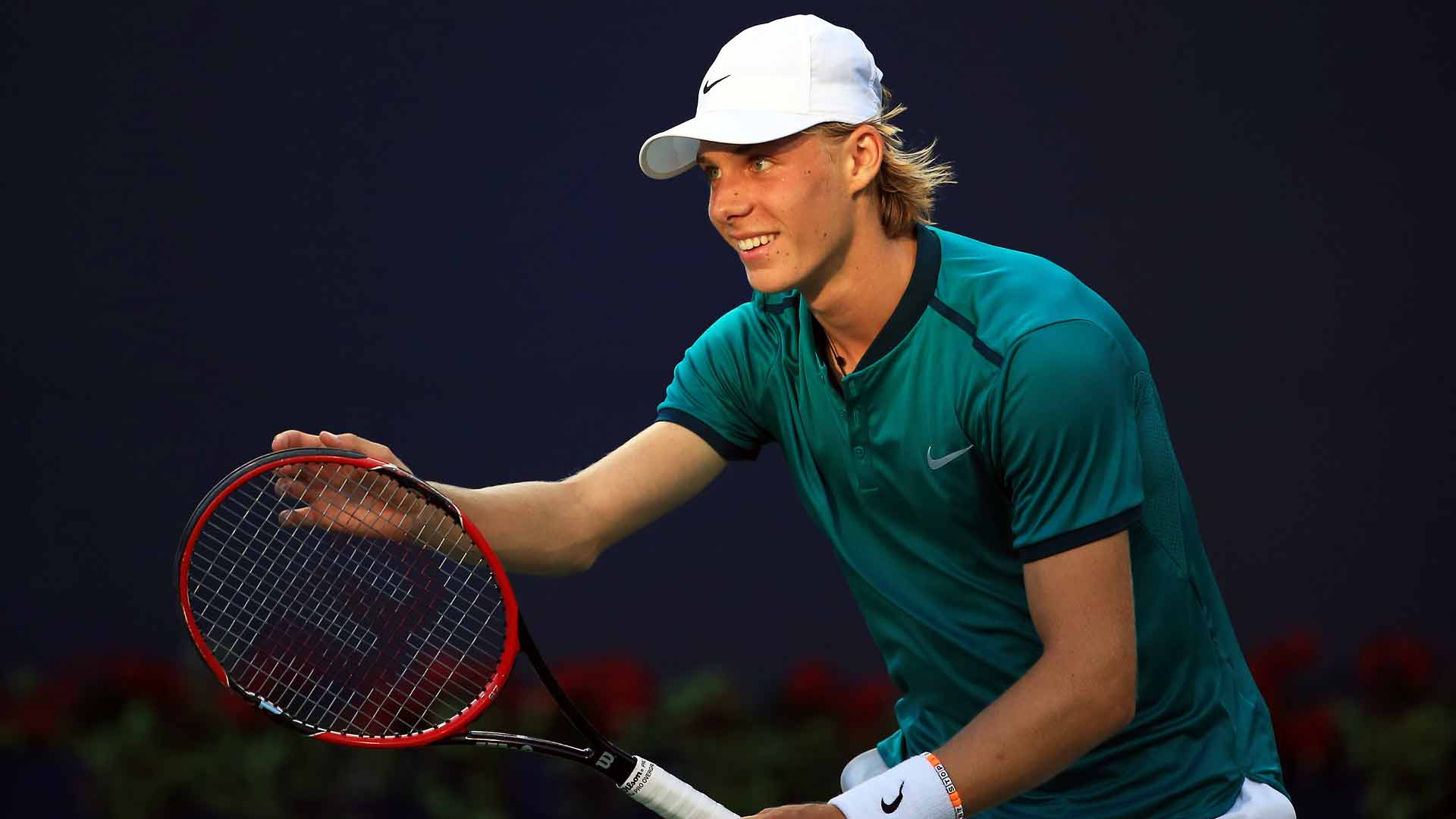Hubi's Huge Upside: 'Everything Is On The Table'
Hubi’s Huge Upside: ‘Everything Is On The Table’
Hubert Hurkacz has enjoyed a relatively smooth ascent up the FedEx ATP Rankings. This week two years ago, the Polish star had not yet cracked the world’s Top 200, and he is already up to World No. 29.
There are some players who make significant changes on and off the court, leading to a surge in their level. But Craig Boynton, his coach, says Hurkacz doesn’t need to make major adjustments; he simply needs to keep plugging away.
“Everything is right in front of Hubi, everything’s on the table,” Boynton told ATPTour.com. “He’s in a really good spot. He just has to learn a little bit more, he just has to grow a little bit more, get a little more experience, get a little bit better in some areas.”
What will it take for him to make the next jump?
“A wise man told me one time to go from No. 30 to No. 20, you don’t have to create something, you just have to do what you do, but do it a little better,” Boynton said. “You just have… to get a little better, keep working to improve some things. There’s no big on-off switch on off, he’s in a great spot, and I’m really looking forward to seeing him continue to improve.”
With that said, there is always work to be done.
At last year’s Rolex Shanghai Masters, Hurkacz lost in a final-set tie-break against then-World No. 7 Stefanos Tsitsipas. Hurkacz won only 26 per cent of his return points in the match.
“He did everything great, but he didn’t return well at all,” Boynton said. “If he had returned a little bit better, he would have won that.
“He said to me after that match, “I see what you’ve been saying. I see what you’ve been mentioning throughout the year. That’s the first thing on the list when we get to the off-season to change.’ We got to work changing his return a little bit and I think it’s been for the better for him. I think it’s been a good move.”
Boynton began coaching Hurkacz at last year’s BNP Paribas Open, where the Pole won three consecutive three-setters against Top 30 opponents to make his first ATP Masters 1000 quarter-final. But it didn’t take him long to notice things he wanted to, at some point, address.
“I just felt that his returning style could get better if we changed a few things,” Boynton said. “I delicately mentioned it to him throughout the year, as I just wanted him to be familiar with the idea.”

The issue had nothing to do with Hurkacz’s receptiveness, which Boynton effusively praised. But even as Hurkacz earned more victories and continued his climb, there simply wasn’t time to zone in on more granular parts of his game.
“In the off-season you generally have more time and you can be a lot more specific, and you can dedicate a nice block of time to a couple specific things,” Boynton said. “When you’re going to a tournament, basically the first couple things you’ve got to figure out are the conditions. What’s going to be the string tension? What are the balls this week? How are the courts playing?
“Primarily you want to be focussed on Xs and Os and competing, and you don’t necessarily want to be focussed so much on reconstructing your strokes [and] technique.”
This past off-season, Hurkacz spent nearly five weeks with Boynton at Saddlebrook Tennis Academy in Florida. That gave the team plenty of time to do just that.
“It was great. Hubi and I got to know each other through tournaments, so there were a lot of things that I saw that I wanted to address when the climate was slower, when we were able to have that training block where we could really work on things for a week at a time and talk about different concepts, different ways of seeing the court,” Boynton said. “You can’t do that at tournaments, because the last thing you want is to confuse your player. That time at home in Saddlebrook was invaluable.”



